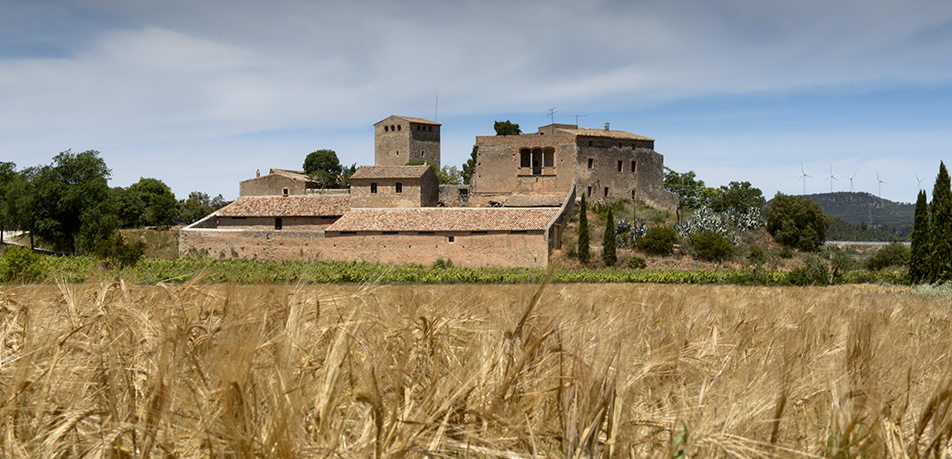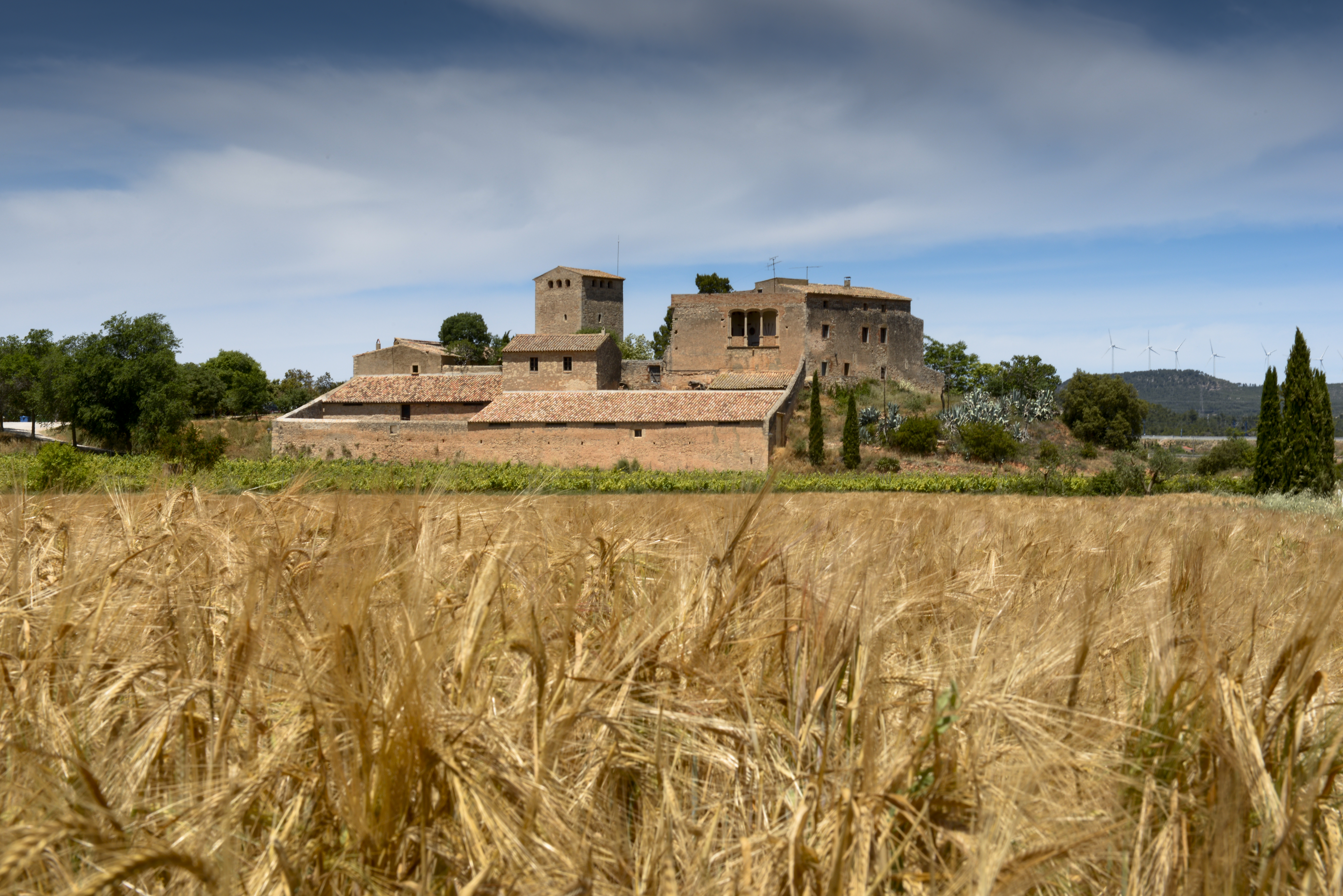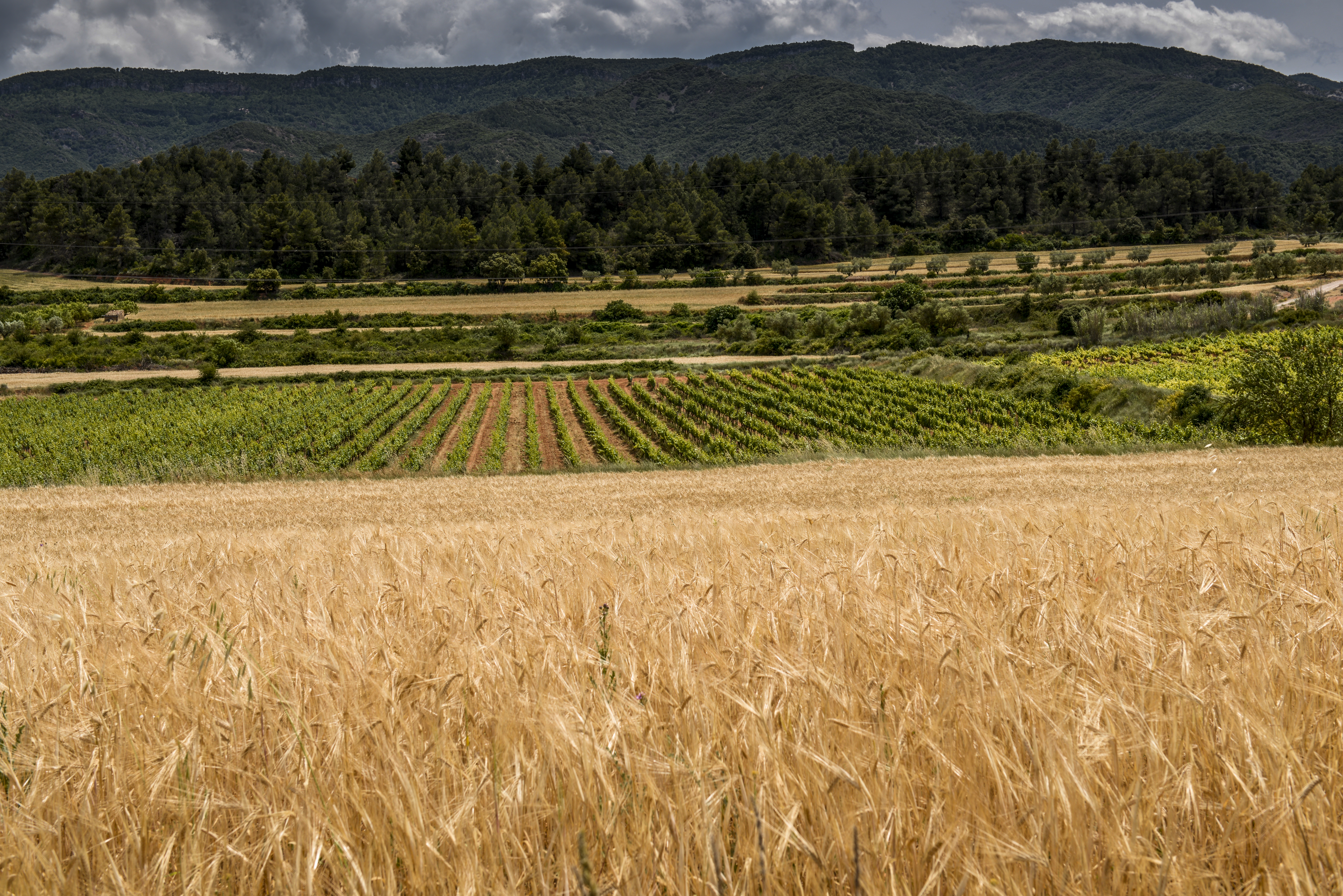Seas of Gold Around the Vineyards

Surrounding many of the vineyards in this country are fields devoted to another of the oldest crops in Mediterranean culture: grain. And at this time of the year, it is reaching the height of its splendour.
Slender stems laden with ears sway in the breeze like veritable seas of gold. Before the harvest transforms them into stubble, the fields of grain offer up one of the most fruitful landscapes of our rural environment – one we often struggle to identify and name.

Grain field next to Milmanda vineyard (a Familia Torres property).
In Spain, around seven million hectares are planted with grain, of which more than three-fourths are dedicated to the production of three main varieties: wheat, barley, and oat. Knowing a few key features of each grain will help us tell them apart:
Despite its scientific name, there is nothing vulgar about wheat (Triticum vulgare). Quite the contrary, this veritable vitamin cocktail plays an essential role in the human diet and in the economic development of many wheat-producing countries.
The most distinctive attribute of common wheat is its characteristic ear: elongated and very fruitful, it is enveloped in long awns (its hair-like appendages or “beard”) that are rough and fragile to the touch, similar to the antennae of an insect. The grain is short and gold in colour.
The wheat we grow today descended from wild varieties of the same genus (Triticum) that have thrived in the temperate fields of the eastern Mediterranean since ancient times.
The most easily recognizable species is oat (Avena sativa) given the unmistakable appearance of its spikelets (the pods that contain the grain) which do not form a compact ear, but rather dangle individually – like earrings – from fine panicles that extend on either side of the stem.
It is much easier to confuse wheat and barley (Hordeum distichon). To tell them apart, we have to examine the ear and make sure the spikelets are arranged in groups of three, whereas in other grains they appear individually.
In closing, it's worth mentioning one more grain that abounds in our fields, although less so than those mentioned earlier. Prior to becoming a cultivated crop, rye (Secale cereale) grew as a wild weed in the wheat fields of northern Europe. The ear is much thinner and finer, with long, well-kept awns that resemble the bristles on a paintbrush.
Believe me, learning the names of the crops we see out in the fields will make our country walks even more satisfying – and when it comes to grains, they can also feed our knowledge.

Vast grain field next to Milmanda vineyard (a Familia Torres property).
